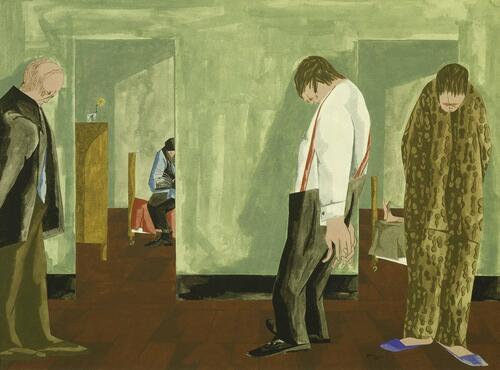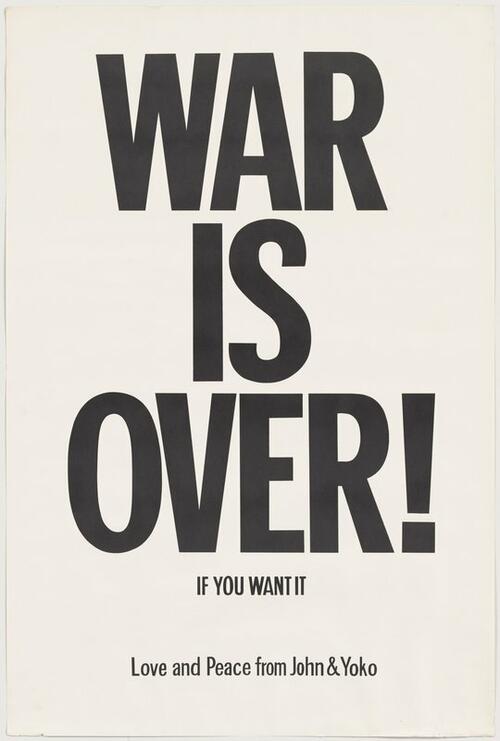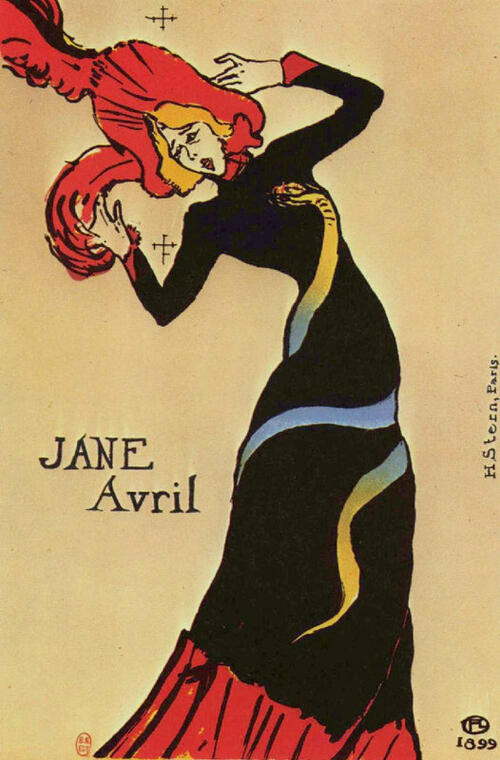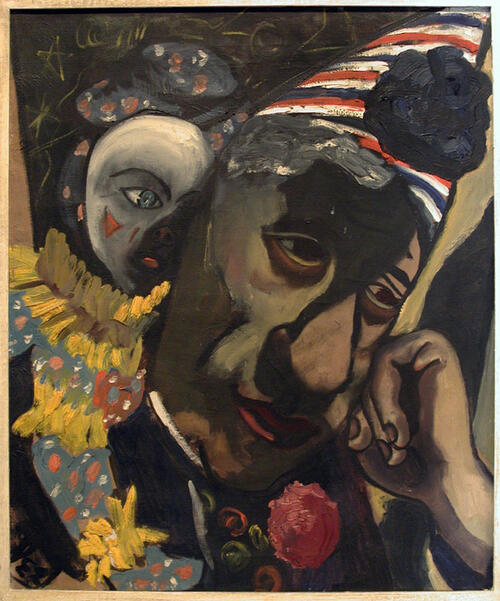
Mental health issues restrict an artist’s ability to create. But, art can also be therapy. In fact, some people find that making art is the only thing that makes life worth living during the toughest of times.
Nevertheless, it’s a myth that mental health problems facilitate art making. Those artists who create in the face of such struggles are doing so in spite of what they’re going through. They have drive and vision, and they persist against the odds.

It might be the worst for artists with depression. Bipolar artists experience the energetic highs of mania or hypomania, which can be fertile times for making art. Artists with schizophrenia see the world in such a unique way that if they can translate the vision to the canvas then they can garner success.
Of course, that’s not to say that they don’t face struggles or to belittle how much they have to work through. But in contrast to the drudgery of living with depression, other conditions can at least facilitate art making.
Unipolar depression, on the other hand, is mired in symptoms that seriously limit creative action. One of the key symptoms is anhedonia, which is the loss of pleasure and interest. In other words, even if you love to make art, you might have zero desire to do so when depressed. If you happen to get the urge, chances are that the common symptom of fatigue will sap that desire. How can you make art when you don’t even have the energy to make breakfast?

Survive those aspects of the condition, and you’re still probably going to be plagued with feelings of worthlessness, hopeless, inappropriate guilt, and the general sense that you don’t offer any value to the world. Even the healthiest artists battle this self-esteem challenge; how can people with depression get past it?
In light of this, it’s more inspiring than ever to see the work from the following artists, who each managed to create impressive, insightful, meaningful art in spite of living with depression.
1. Jacob Lawrence

Depression by Jacob Lawrence at the Whitney Museum
Jacob Lawrence was a prominent African American artist and his work typically reflects his immersion in the Harlem Renaissance. His pieces struggle and show triumph. However, the images painted during his time in inpatient treatment are different. They show only struggle. Or perhaps, not even struggle, but rather humans succumbing to agony and defeat.
The garish colors of his fellow patients aren't entirely featureless; unlike most of his subjects, their features suggest that these are white people. In fact, Lawrence was struggling with some important questions about race when he fell into the depression that caused him to check himself into a Queens psychiatric hospital. He was accepted as a black artist in a white world, but he questioned why that he was. Why had others not been accepted? Where were his black peers? He felt isolated, alone, and confused. Nine months later, when he was released, his Hospital series garnered a lot of attention. A mostly white art world said it was his best work. Ebony magazine questioned whether this was subtle racism; did they critics like the work better because it reflected white reality, even if it was the reality of people in a mental hospital?
Regardless, the hospital stay helped Lawrence. He said that getting guidance to better understand his own personality and nature was one of the deepest experiences of his life. Plus he gave a shout out to his wife (painter Gwendolyn Knight) for her unwavering support during his stay.
With depression, people might experience a single depressive period, or they might suffer from chronic relapse. In Lawrence’s case, he spent nine months in inpatient treatment, after which he thrived.
2. Yoko Ono

WAR IS OVER! by Yoko Ono at the Museum of Modern Art
Sometimes depression stems from trauma. Yoko Ono was no stranger to trauma. Her father’s work took him in and out of her early life. They were in Tokyo when it was bombed during WWII. Though they survived, they were thrown into hunger and poverty. She recalls her first work of art as being an ice cream menu that she created for her brother who was struggling with depression. She, too, would have to battle that same condition.
In the early 1960s, her first marriage was unraveling, and she attempted suicide and spent time in a mental institution with a diagnosis of clinical depression. The trauma continued, not the least of which was that the world hated her because she “broke up the Beatles.” She had a delayed reaction to John Lennon’s death, reporting in 1997 that she went into another period of depression. Nevertheless, she persevered, creating art and working hard as an artist and activist to this day.
3. Jane Avril

Jane is more often considered a muse than an artist, thanks to the famous paintings done of her by Toulouse-Lautrec. However, she was an artist in her own right, as a can can dance performer who inspired the semi-fictional character in Moulin Rouge.
She was one of those victims of the Freudian obsession with women’s “hysteria” as a disease. This was complicated by the fact that she also had a neurological, autoimmune, twitching condition called St. Vitus Dance (now called Sydenham’s chorea) that the ignorant people of her time took to be a sign of madness.
Although the assumptions people made about her because of her twitching were incorrect, it’s true that she battled mental health issues, specifically depression. At times, dancing could relieve her depression. At other times, she was too depressed to dance. She would go through periods where dance felt impossible, periods frequent enough to garner her the rude nicknames “Jane The Crazy One” and “The Strange One.”
Sometimes those periods of depression were prompted by grief. For example, she fell into such a state after attending the funeral of Henri Woestyn. Other times it was the pain in her body that contributed to her state of mind, times during which she would often think about death (which is yet another symptom of depression).
Toulouse-Lautrec often painted her in sadness, even though she was dancing, a disconnect that prompted one art critic to cite her as “an example of the melancholy of a whole generation”.
4. Henri de Toulouse-Lautrec

Woman Pulling Up Her Stocking at the Toulouse-Lautrec Museum
Perhaps one of the reasons that Toulouse-Lautrec painted depression in Jane’s face was because it was something he recognized from his own experience. In fact, Jane wasn’t the only one that he portrayed this way. An examination of his 700+ paintings and 5,000 drawings reveals that, as Michael Kimmelman put it in a 1992 New York Times article, “over and over again, Lautrec turned out images of alienation, joylessness, and ennui.”
Depression would often get the best of this artist. He was known to be self-loathing in a humorous way. At 17, he flunked his high school diploma examinations, upon which he promptly ordered business cards with his name and the job title, “Exam Flunker.” It may have made others chuckle, but it was likely also a way of hiding the low self-esteem characteristic of depression. He was the type of person who would laugh at himself before others could do so.
Of all of the artists with depression, he’s the one who really seemed to benefit most from using art to heal. Art gave him a career when he failed out of school. It was actually what got him released from the clinic because his doctors saw his resuming painting as a sign of recovery; (although it’s debatable whether or not that was a good thing since he died shortly thereafter). One biographer (Henri Perruchot) went so far as to say, “without art his life would have been an appalling void.” And yet, it was not enough, as his untimely death suggests.
For a two year period starting in 1897, he experienced several breakdowns, spending some time in a clinic to get help. He arguably self-medicated with alcohol, which led to physical problems that exacerbated the mental health issues. This was reflected in his later work, which a MoMA biography says, “seem to reflect the depression and hopelessness of a man who is slowly killing himself and somehow unable or unwilling to stop.”
At the time of his death he was at work on the painting “Admiral Viaud,” a portrait of the friend who was hired as his caregiver after his release from the hospital. Viaud was supposed to help him stay sober, but Toulouse-Lautrec quickly started drinking again. He suffered a stroke, and then died in 1901.
5. Alice Neel

As with Yoko Ono and others, trauma likely contributed to Alice Neel’s depression. Before the age of 30, she had lost a child to diptheria and lost a husband to abandonment. He took their second child when he left, bringing her to live with his sisters in Cuba, so that Neel was forced to endure even more grief. It nearly broke her. Although initially she threw herself into painting, ultimately, she had a breakdown, lost massive amounts of weight, attempted suicide, and ended up hospitalized for a year. She was actually released earlier but then attempted suicide by sticking her head in the oven, was returned, and immediately made a second attempt by swallowing shards of glass. She wanted to paint while she was there but was forbidden from it, asked to sew instead - a craft she hated. Her lowest point coincided with the Christmas season, when she so painfully saw the contrast between her mood and the joy people are “supposed to feel” at this time. It’s a problem that plagues many people with depression each year.
As with Toulouse-Lautrec, art might have helped to save her. A social worker eventually took an interest in her, learned about her love of art, and offered her a drawing pad. She eventually got healthier and was able to leave the asylum. Shortly thereafter, she fell in love with Jose Santiago, with whom she had a few good years (and a son). He left her for a younger woman. She put all of her feelings into her work. Her paintings of Jose done in the 1930’s have been called sullen, pensive, and brooding; suggesting that either he also lived with depressive tendencies or perhaps she infused her own mood into the pieces. She also did biographical art about losing her child (Futility of Effort, 1930 ) and her asylum stay (Suicidal Ward, 1931).
It has frequently been noted that her life and work are seemingly inseparable. The mood in her pieces reflects her own emotional struggles. As New York Times writer Helen Harrison puts it, “The anxiety, distress and anomie of her subjects mirrored the problems of her private life.” Harrison goes on to note that although Neel is best known for her portraits, a look at the settings of the paintings - empty streets, empty rooms, and hospital wards - gives deeper insight into the artist’s depression. Although she only attempted suicide twice in her thirties, she lived into her 80s and described herself as feeling suicidal her entire life.
Depression is a particularly prevalent condition, so keep your eye out for an upcoming post highlighting the work of additional artists with depression. This post is part of our ongoing series on Mental Health in Art History.
Sources
- Alfasa, Josef. “Articulating Biographical Sketches of Diminutive Luminaries.” RoseDog Books. May 8, 2012.
- Dickinson, Stephanie. “Jacob Lawrence: Painter.” Cavendish Square Publishing, LLC, Jul 15, 2016
- Glueck, Grace. “Alice Neel, Self-Styled 'Collector of Souls,' Unfurls Her Own, in Glee and Heartbreak.” The New York Times. March 21, 1997. Retrieved Feb 3, 2019 from https://www.nytimes.com/1997/03/21/arts/alice-neel-self-styled-collecto…
- Harrison, Helen. “Art; Catching Corners of the Human Spirit.” The New York Times. May 4, 1986. Retrieved Feb 3, 2019 from https://www.nytimes.com/1986/05/04/nyregion/art-catching-corners-of-the…
- Henri de Toulouse-Lautrec: images of the 1890's. Museum of Modern Art, 1985.
- Hoban, Phoebe. “Alice Neel: The Art of Not Sitting Pretty.” St. Martin’s. 2010.
- Jiminez, Jill Burk. “Dictionary of Artist’s Models.” Routledge. October 15, 2013.
- Johnstone, Nick. “Yoko Ono Talking.” Omnibus Press. April 7, 2010.
- Kimmelman, Michael. “ART VIEW; Toulouse-Lautrec, Stripped of the Cliches.” New York Times. Jan 12 1992. Retrieved Feb 3 2019 from https://www.nytimes.com/1992/01/12/arts/art-view-toulouse-lautrec-strip…
- Newhall, Edith. “Neel Life Stories.” New York Mag. Retrieved Feb 3, 2019 from http://nymag.com/nymetro/arts/features/3409/
- O’Hagan, Sean. “Yoko Ono at 80: 'I feel that I am starting a new life, a second life'.” The Guardian. May 25, 2013. Retrieved Feb 3, 2019 from https://www.theguardian.com/culture/2013/may/26/yoko-ono-80-meltdown-jo…
- Perruchot, Henri. “Toulouse-Lautrec: A Definitive Biography”. World Publishing Company. 1960.
- Shercliff, Jose. “Jane Avril of the Moulin Rouge.” Macrae Smith Company. 1954.
- Wickman, Forrest. “Where’s Yoko? On John Cage’s Piano.” BrowBeat: Slate’s Culture Blog. Jan 16, 2013. Retrieved February 23, 2019 from http://www.slate.com/blogs/browbeat/2013/01/16/where_s_yoko_on_john_cag…
Comments (4)

Wow, you could make a whole book of these guys.
A couple of edibles a day helped a lot with my depression! I wonder if instead of alcohol these artists used some other substance if it would have helped?

I wonder how well the modern tips and tricks would have worked for these artists?










Love looking at artwork after a shroom hit